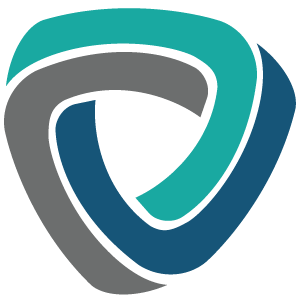Mitigating corruption in aid: Follow-up questions
The PHAP Online Briefing on Mitigating corruption in aid on 26 October featured a discussion with Adele Harmer (Humanitarian Outcomes) and Roslyn Hees (Transparency International).
The event focused on the key findings of the recent report from the Collective Resolution to Enhance Accountability and Transparency in Emergencies (CREATE) project, providing participants with an overview of the main risks related to aid integrity, and also presented some mitigation and accountability measures to fight corruption in the humanitarian sector.
Many of the questions from participants were answered live during the event (which you can listen to in the event recording). We have followed up with the experts on your questions that we did not have time to ask during the event – you can find their answers on this page.
In addition, participants provided their views in response to the poll questions that were asked during the event – you can find their answers at the bottom of this page.
“How does the CREATE report relate to the 2008 and 2010 reports on humanitarian corruption by Feinstein International Center and ODI?”
- Psychologist, Switzerland
 Roslyn Hees
Roslyn HeesThe research for the CREATE case studies used the corruption risk analysis framework developed by ODI, commissioned by Transparency International and presented in the report “Mapping the Risks of Corruption in Humanitarian Action”, Ewins, Pete et. al., 2006, Humanitarian Policy Group, ODI. This corruption risk analysis framework was also used to guide the research that served as a basis for the report “Preventing Corruption in Humanitarian Assistance: Final Research Report”, 2008, Maxwell, Daniel et. al., Feinstein International Center (Tufts University), Humanitarian Policy Grou, ODI, and Transparency International. The framework was also the basis for the “Handbook of Good Practices for Preventing Corruption in Humanitarian Operations” published by Transparency International in 2010 and updated in 2014.
“In terms of the methodology used for the CREATE report, what quantitative and qualitative indicators did you work with in order to identify corruption in the analyzed humanitarian settings?”
- Manager, Peru
 Adele Harmer
Adele HarmerThe research was qualitative, which is consistent with Transparency International’s approach in researching and generating evidence on corruption issues. The goals were to 1) identify how humanitarian stakeholders perceive corruption risks within humanitarian assistance (and for this the 2014 “Handbook of Good Practices for Preventing Corruption in Humanitarian Operations” published by Transparency International was utilised as the guiding framework) and 2) to highlight the practices that aim to increase the integrity, transparency, and accountability of humanitarian aid by preventing and mitigating corruption. It was not, however, a quantitative exercise and makes no claim about the proportion of corruption, nor does it attempt to estimate the overall percentage losses due to corruption within the humanitarian sector.
“Did you identify government anti-corruption units in the four analyzed countries in the CREATE report? If so, how much do NGOs actually interact with these units?”
- Anti-Corruption Expert, Switzerland
 Adele Harmer
Adele HarmerThe governments in Afghanistan and Lebanon have established anti-corruption institutions but corruption within the humanitarian assistance sector has not, to date, been a focus of their work, and as far as the research teams could ascertain, the humanitarian communities in those countries have not engaged with those institutions. In Somalia and Afghanistan, the UN has established Risk Management Units, which play an important analytic role in understanding corruptions risks in those settings, and offer a wide range of services to international humanitarian organizations, but to date local NGOs have had limited participation.
“If you encounter corruption in your work and your organization does not have an established anti-corruption policy or unit, who should you report to?”
- Statistician, Australia
 Roslyn Hees
Roslyn HeesIf your organization does not have an established anti-corruption policy or whistle-blowing mechanism, you could report such corruption to an Ethics Office or Ombudsman, provided that such bodies exist within your organization. Otherwise, you should report your concerns to a line manager (if the line manager is not an object of suspicion in this regard), or to the HR department.
"In a humanitarian setting, is it considered as non-financial corruption, or at least as an act against integrity, when an interpreter purposely manipulates the information he/she is translating for private gain?"
- Partnership and Capacity Development Specialist, India

Roslyn Hees
This would definitely be considered corruption, as the interpreter has been entrusted to translate information objectively and correctly, and such manipulation would be considered an abuse of power.
"Can you please address the concern of externalizing services in an aid organization? For instance, how responsible can be an INGO if another NGO partner or a service provider is acting against their integrity?”
- Statistician, Australia
 Roslyn Hees
Roslyn HeesAn INGO is ultimately responsible for any corrupt actions of their NGO partners or contractors. For this reason, it is important to carefully vet partners, especially as regards their integrity, and also to monitor the selection and the procurement activities of contractors and sub-contractors. The latter is more difficult to carry out if there are multiple layers in the contracting chain.
"Lately, I have noticed that donors tend and prefer to hire third party monitoring (TPM) companies directly to monitor the funds they grant. Do you think this is due to suspicions of corruption and that they do not trust the accountability mechanisms of grant recipients? Are there any other reasons for this?"
- Consultant, Turkey

Adele Harmer
Donor interest in TPM is largely driven by the same challenges aid agencies face in that they are primarily used where there are significant access and security constraints. There is no evidence that they are specifically used due to suspicions of corruption, but there is some evidence to suggest donors are concerned that grant recipient’s accountability mechanisms are insufficient, or are not giving them the type of information that they are most concerned about. There is excellent recently published research on TPM which might be of interest to review – see here.
Poll question: “In your opinion, are there any other reasons that make humanitarian aid vulnerable to corruption?”
 Participants’ answers
Participants’ answers
- Rushing when delivering assistance in order to save people's lives on time.
- The fact of working with life-saving assistance makes paying bribes more acceptable in many organizations.
- Exemption of procurement rules in onset emergencies enables corruption.
- The lack of capacity in some countries is a crucial point.
- Working with insecure infrastructure.
- Due to security - there is a lack of access to large markets and most programming is done remotely.
- Humanitarian aid agencies often work too closely with or are coopted by terrorist organizations.
- There is a high level of naivety, a lack of compliance with regular standards, and a lack of follow-up on law violations.
- Having a results-driven approach without paying attention to the process itself.
- There are differences on the perception of corruption due to different cultural backgrounds.
- In some countries, humanitarian actors may have a massive economic power and are close to power circles, so they become a target.
- Unlike in the private (for profit) sector, where they need to sustain profitable activities, the humanitarian sector is less accountable in terms of efficiency.
- There is a mismatch of needs and support.
- Donors are unwilling to fund sufficient support staff to fight against corruption in aid.
- Some donors abdicate their responsibility down the chain, without having a proper oversight on the use of their funding.
- The tendency to position organizations despite the humanitarian principles.
Poll question: “Based on your own experience, would you have any additional recommendations on how to best face corruption at work?”
 Participants’ answers
Participants’ answers
- Set the tone at the induction stage.
- Select good staff - this is the most important point, all other procedures come second.
- Clearly define work flows for each process.
- Be proactive and segregate duties.
- Be transparent, accept that corruption happens, also within your organization, and discuss about what could be done about it.
- Frequently train on corruption and raise awareness about this issue among staff.
- Develop guiding infographics that sensitize actors about the importance to mitigate corruption in aid, to be used during relevant meetings and discussions.
- Build anti-fraud and anti-corruption policies from a bottom-up approach - balancing local culture with donor requirements and international practices.
- Have a carrot and stick approach with corruption, that is, incentivize integrity and punish corruption.
- Have a strong sanctions system.
You can access the rest of the Q&A and as well as further resources on the event page.